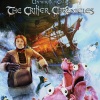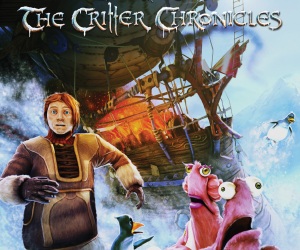 Game: The Book of Unwritten Tales: The Critter Chronicles
Game: The Book of Unwritten Tales: The Critter Chronicles
Developer: King Art Games
Publisher: Nordic Games
Available on: Windows PC, Mac OSX
Reviewed on: Windows PC
The Book of Unwritten Tales may well have been stuck in development for a long, protracted length of time – due to a slow and mammoth task of localisation from German – but when it finally received an English-language version, the game was hugely impressive. A deep, complex story split between four heroes, detailed graphics that were full of character and a brilliant rousing musical score, with impressive voice acting. Not to mention a sense of humour that was legitimately funny.
So it comes as no surprise that a sequel was soon under way, and just over a year later, The Book of Unwritten Tales: The Critter Chronicles has emerged – actually a prequel to the first game – still following two of the protagonists we met before, namely the adventurer Nate and his strange, furry sidekick Critter.
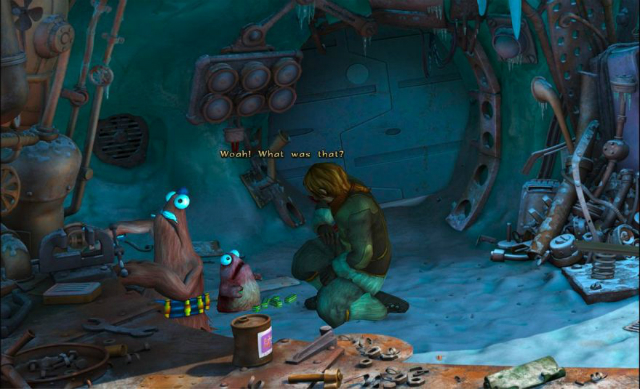
STORY: We are taken back in time a little, to see how the unlikely pair came together. The game is set in the Northlands, which is an area of the kingdom that is permanently frozen, and where the strange creatures known only as Critters live. Nate is on the run from a pirate from whom he has stolen a ship, an is being chased by a bounty hunter, who was sent to get it back. As the two struggle, the floating airship crashes it into a snowy mountainside, and Nate awakes to find himself stranded, and hung upside down by a Yeti; a’la Luke Skywalker at the start of The Empire Strikes Back.
Luckily for Nate, Critter – a particularly strange-looking member of the local Critter species – wanders along, and the fates of the two are from then on intertwined, which sees them dealing with a local over-enthusiastic animal rights activist, a group of grumpy penguins, and Munkus – who featured in the first game and who wants to take the secret of the Critters and use it to build a Shadow Army. Nate and Critter find themselves thrust into the middle of this struggle, and must help stop Munkus at all costs. I would say that Critter can become a bit irritating, and Nate isn’t as endearing as Wilbur the Gnome from the first title, so gamers might not connect so closely with the characters in this prequel.
Whilst the first game was influence heavily by The Lord of The Rings and World of Warcraft, this prequel parodies and takes inspiration from a range of other sources, such as the aforementioned Star Wars, Harry Potter and other video games such as Portal. The game is packed with references and riffs on popular culture, many of which are subtle or in the background, but keen adventurers will take great joy in finding them. The sense of humour isn’t too in your face, but it is clever and does make the title far more likeable. The localisation team have done a great job of making the jokes work in another language.
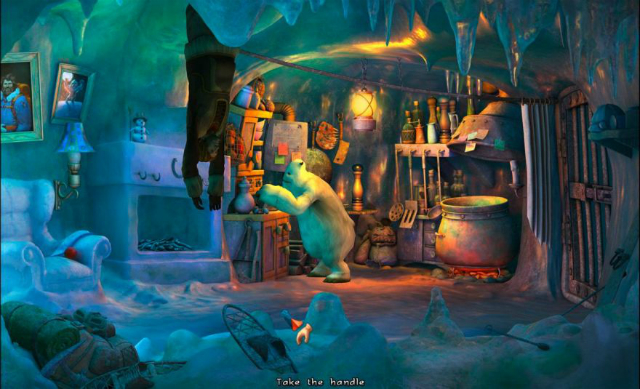
GRAPHICS: The in-game engine is more or less identical to that used in the first game, and as such the animations and art are very similar. That isn’t a bad thing, as the backgrounds are layered and filled with tonnes of detail, with some really beautiful settings on show. The art style combines a mark of realism, but then stylises it all somewhat to give it an otherworldly, slightly cartoony style. This allows the character models and backgrounds to merge a bit more successfully, and it must be said that the game is nice to look at.
SOUND: The voice acting is one of the strongest points of the game, and the cast who have been assembled clearly understand the sense of humour of the game and what their characters should sound like in the situation. For a localised game – as gamers found last time out – the script is very strong and has been masterfully translated so that none of the jokes or subtleties of the scripting are really lost in the mix.
It is a testament to the design team that such care has been taken, and other adventure game makers should take note as too many European-developed titles are rushed through localisation and end up in a bad state. Add to that a really dramatic and effecting score, that highlights the action in-game but also helps add to comedic effect at certain points, and the sound design of the title is perhaps even more impressive than the visuals.
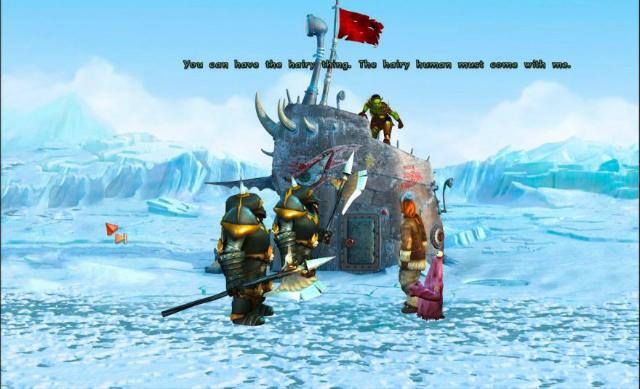
GAMEPLAY: You won’t get a particularly revolutionary gameplay experience from The Book of Unwritten Tales: The Critter Chronicles. This is standard adventure gaming, using a point and click interface with one mouse button to examine, the other to interact. This will change depending in the situation, so it could be talk, pick up or use – and most gamers who have played an adventure before will pick this up quickly – along with the regular dialogue trees for conversations. A nice touch to give players a small hint if they are lost, or to eliminate pixel hunting when you can’t locate the right place to click, is that holding space bar will bring up all the on-screen hotspots. Of course this makes things slightly easier, but it’s totally optional and will aid those less experienced adventurers out there.
In terms of puzzles, many are inventory based, were you need to gather items and combine them to create new ones, or use them in the environment. But then there are quite a few quite creative logic puzzles too, such as one physics-defying puzzle based on the artwork of M.C. Escher. This is a real mind-bender, that shows some great artistic and puzzle design at work. There are other complex puzzles too, but somehow even when the situation is quite a wacky one, the puzzles maintain a logical lean, and won’t be too obtuse.
Players will get to control both Nate and Critter separately in some chapters, and have the ability to switch between the two at will later in the game, so you will be able to see and tackle the same locations from the point of view of both characters. This can be quite fun, as each has a very different perspective and you can try their different approaches at trying to solve the same problems.

One of the most interesting features is the fact that you can choose to start the game in normal or hard mode. The developers recommend normal for those who were happy with the challenge in the first game, whereas hard will make things a bit more challenging. Other characters won’t give you as many clues in what they say, you won’t be able to use the space bar to highlight hotspots and some of the puzzles are altered and lengthened to make them more difficult. This is a good option to allow the game to be more accessible to players who aren’t used to the genre, but also allows for those who want to go for an extra challenge.
LONGEVITY: As an adventure game, the same old arguments will undoubtedly rear their head about the game’s lack of re-playability. Of course, this is a constant problem with the genre as most titles simply have one way they can be played, and little reason to go through it again.
The game should take around twelve or fifteen hours for a regular playthrough, but then there is also the hard mode, so some players might want to tackle regular, then re-play the game on hard to try all the more taxing puzzles and different approaches to situations. This actually makes the game a bit more re-playable than your regular adventure title, and is a nice touch that could add some life to the game. There is also a lot to look at in the game world, and players can spend a long time simply listening to all the humorous responses.
VERDICT: The game is another strong entry in the series, after The Book of Unwritten Tales provided a fine foundation. It is, at heart, a simple, old-fashioned adventure game, but has such strong writing, fine graphics and an impressive soundtrack, that when it all comes together it is a thoroughly enjoyable whole. The game manages to be actually funny, and provides a fair challenge for gamers with a range of different adventuring experience. It might not have quite the same character appeal as the first game, but it certainly serves as a nice backdrop for the series, filling in some of backstory for the events that we played in the original.



